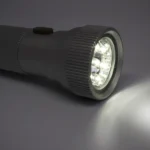
The Great Barrier Reef is one of the seven wonders of the natural world. It is the world’s largest coral reef system and the only living structure seen from space. The coral reef is like a city of separate homes made by tiny sea creatures called coral polyps.
The Great Barrier Reef covers 132, 973 square miles along the coast of Queensland, Australia.
It is the world’s largest reef system.
It is made up at least 900 separate islands and 2 900 individual reefs.
More than 1,500 species of fish – incredibly, 10% of the world’s fish species inhabit the Great Barrier Reef.
There are 400 species (different types) of corals in the Great Barrier Reef. Coral reefs are made up of many thousands of individual animals called coral polyps that form colonies.
The reef is millions of years old!
There are 350 types of hard corals and each polyp has 6 tentacles. Examples are Brain and Staghorn coral. Brain coral can live for 1,000 years and grows almost half an inch (1 cm) every year. Staghorn coral can grow 1 ½ inches (3.5 cm) every year.
The Great Barrier Reef is the largest living thing on Earth and is visible from outer space!
Soft corals like Sea whips don’t produce a limestone framework to live in and look like brightly colored plants. They have 8 tentacles and can triple their size in a year.
This incredible eco-system is 2,300km long.
In the middle of many underwater reefs, a Coral Cay forms above the surface. 1000’s of pieces of dead coral get broken off the reef and get washed up onto shore.
There are thousands of reefs and hundreds of islands.
Coral reefs grow best in clear, warm ocean water of temperatures between 70 – 81oF(26 – 27oC).
10% of the worlds total fish species can be found just within the Great Barrier Reef.
This impressive reef is home to countless species including 6 species of turtles, 215 species of birds, 17 species of sea snakes and more than 1,500 species of fish!
The Great Barrier Reef attracts over 2,000,000 visitors each year!
There are 215 species (different types) of birds on the Great Barrier Reef. 29 of these are sea-birds that dive for fish in the ocean such as the White-breasted sea eagle, Southern Shearwater, Yellow-footed Booby and Pacific Tern.
Birds visiting the coral islands drop plant seeds out of their feathers. As a result, most islands have grasses and trees growing on them. The birds come back and build nests in the trees and among the grass. There are 19 species of birds nesting on 78 islands and coral cays.
The Great Barrier Reef is greater is size than Tasmania and Victoria combined!
There are 1500 species of fish on the Great Barrier Reef. The oldest fish on the reef is the Red Bass who can live for 50 years. The largest fish is the Whale Shark who can grow to a bit over 39 feet long (12m) long.
There are 14 species of sea snakes swimming around the Great Barrier Reef. They must come to the surface every 2 hours to breathe.
There are 6 species of Turtles that lay their eggs in the coral sands of the Great Barrier Reef – Green, Hawksbill, Leatherback, Loggerhead, Flatback and Olive Ridley. Turtles can live for a 100 years.
The Great Barrier Reef is the size of 70 million football fields!
Turtle mothers can lay 100 leathery-shelled eggs at a time in a nest that she has dug out to a depth of almost 2 feet (60 cm). The eggs look like golf-balls.
If turtle eggs are laid in warm, dark sand the hatchlings are mainly female (girl) turtles. Cooler, lighter sand produces mainly male (boy) turtles.
Turtle eggs hatch after about 12 weeks but may take up to 2 days to climb to the surface of the sand.
Baby turtles swim out to sea and stay there for as long as 30 years until they are ready to breed. The females return to the island they were born to lay their eggs.
There are 5, 000 species of mollusks on the Great Barrier Reef. These include Giant clams that can live for 70 years. Other mollusks such as octopus, cuttlefish and squid are very intelligent and communicate with color patterns in their skin.
This impressive reef is home to countless species including 6 species of turtles, 215 species of birds, 17 species of sea snakes and more than 1,500 species of fish!
There are 500 species of seaweed living on the Great Barrier Reef.
30 species of whales, dolphins and porpoises visit the Great Barrier Reef.
Humpback whales swim up from the icy Antarctic water to give birth in the warm tropical waters. They spend the summer months swimming around the coral islands until the baby whale grows big enough to make the trip back down to the Antarctic to feed on fish and krill.
The Great Barrier Reef is the world’s largest living structure.









